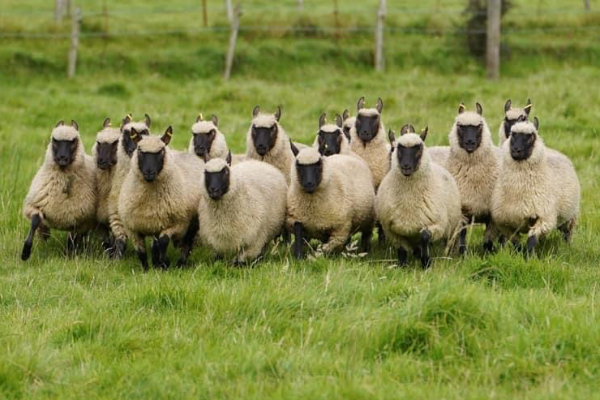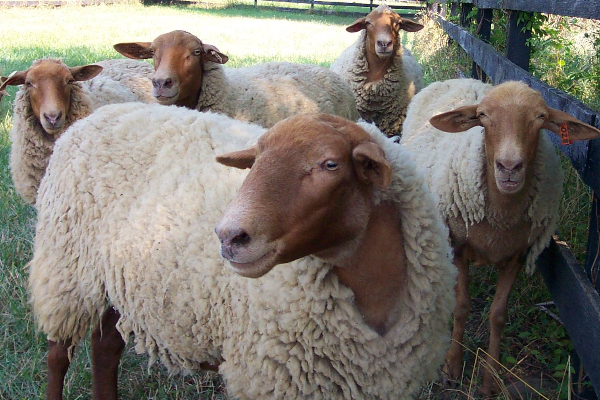
Coburger Fuchs Schaf (Coburg Fox Sheep)
Coburger Fuchs Lambs and grown sheep are sold mostly through direct marketing for its delicious, tender, and low-fat, meat with a venison taste....

Clun Forest Sheep
The Clun Forest is a breed of domestic sheep originating from the area surrounding town of Clun, situated in the beautiful Clun Valley in the southwest corner of Shropshire and near the county of Powys....

Cheviot Sheep
The Cheviot lambs have a low birthweight, which makes for ease of lambing, yet they are soon on their feet to seek milk....

Charollais Sheep
The Charollais Sheep is a breed of domestic sheep originating in east central France, in the same region in which Charolais cattle originated, Charolles and Saône-et-Loire. ...

Castlemilk Moorit Sheep
Castlemilk Moorit Ewes are always horned and exhibit two uniform and wide spreading horns, the degree of curl of the horns may vary from little to a full semi-circle....

Canadian Arcott Sheep
Canadian Arcott Sheep are hornless, occasional scurs acceptable, legs set squarely, heavy boned, free from wool, covered with white or mottled hair....

California Red Sheep
California Red Lambs are born solid rust or cinnamon red. As it matures, the color of the hair remaining on the legs and head can range from golden to dark cinnamon....

Urinary Calculi (Water Belly)
Urinary calculi or “water belly” is a common metabolic disease of male sheep and goats. The disease occurs when calculi (stones), usually comprised of phosphate salts, lodge in the urinary tract and prevent urination. ...

Tetanus
Tetanus is a disease caused by Clostridium tetani, an organism commonly found in the soil. It is much more prevalent on farms where horses have been kept. The spores live in the soil for years and can present a continuing disease problem on some farms....

Sub-Acute Fasciolosis
Sub-acute fasciolosis occurs in the late autumn and early winter but in these cases the disease is not so rapidly fatal and the affected sheep may show clinical signs for one or two weeks prior to death....

Written by
H Cetin KATIRCI
Ask for Help From Our Community
IllnessesMore
Forage cropsMore
![]() Патологическая физиология голодания Arina TARAN
Патологическая физиология голодания Arina TARAN![]() Дефицит фосфора (гипофосфатемия) Hipofosfatemi Arina TARAN
Дефицит фосфора (гипофосфатемия) Hipofosfatemi Arina TARAN![]() Какие бывают кормораздатчики для ферм КРС? Irina Makarova
Какие бывают кормораздатчики для ферм КРС? Irina Makarova![]() Кормушки для овец Diana Myakisheva
Кормушки для овец Diana Myakisheva![]() Питание домашних коз: что едят, виды корма и правила кормления Alina Arslantürk
Питание домашних коз: что едят, виды корма и правила кормления Alina Arslantürk![]() Важность минералов питании сельскохозяйственных животных Irina Makarova
Важность минералов питании сельскохозяйственных животных Irina Makarova









